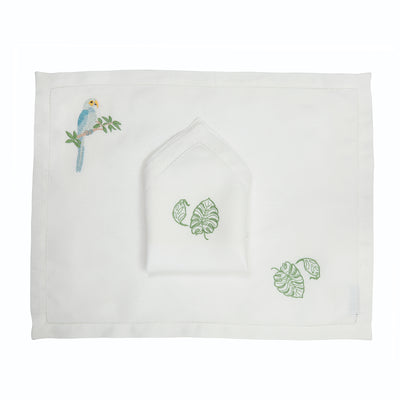Biot glassworks
Through this section, discover a specific know-how of a French heritage company with the highlighting: of a gesture, the tool to achieve it and the craftsman who executes it. The gesture, the tool, the actor.
In more than 60 years, the bubbled glass creations of this famous factory have colored the tables of the Côte d'Azur and far beyond. Both Gironde and lovely, they have crossed the ages and fashions. At the time of celebrating the know-how of the French Riviera, a visit to Biot made perfect sense.
Photo: Philippe Vaurès Santamaria

Make a defect a quality. Such is Éloi Monod's quest after the war. Coming to Biot for the excellence of his glazed pottery productions, the ceramist cannot restrain his attraction to the transparency and imperfections of… glass. He got it into his head to develop a bubbled version.
The process is already known. Lalique, in particular, uses it, but in an artistic way. He, the major of the School of Ceramics of Sèvres, wishes to better master the technique to produce artisanal series of constant quality. With the help of two glassmakers, he created a machine, which is still in operation, allowing the fine and uniform sprinkling of sodium carbonate enclosed between two layers of molten glass.
In 1956, the Verrerie de Biot was inaugurated. Right from the start, Éloi Monod chose to open it up to the general public, thus prefiguring industrial tourism. The Cannes Film Festival takes over. And how! “Gregory Peck and Lauren Bacall are our first customers, Jacqueline Kennedy-Onassis follows…”, explains Anne Lechaczynski, current co-owner of the company.

As pioneers of retraining in craftsmanship, his father, an IBM executive, and his mother, a librarian, acquired the glassware in 1973 before developing it. “Today, alongside the house's 300 classics, capsule collaborations enliven the offer. » Those inspired by travels and encounters, in particular with the designers invited by the villa Noailles on the occasion of exhibition events on crafts. What to continue to seduce. Anne-Sophie Pic, recently, like her grandfather before her; Philippe Starck too, for the tableware of Lily of the Valley, his latest hotel project at La Croix Valmer. So many signs of a living heritage.
The gesture: the outline

At La Verrerie de Biot, for years, the same gestures have given glass its shape and, in doing so, its letters of nobility.
First, take the glass out of its oven, at nearly 1,120°C, roll it on the marble to round it off and blow it lightly. Then sprinkle it with sodium carbonate and proceed to the second picking in order to enclose the chemical compound between two layers and thus allow the uniform creation of small bubbles. Then place the sketch. A key stage during which the craftsman gives the glass its shape, using wooden shapes, called mallets, and especially irons.
While constantly turning his cane, the glassmaker opens these compasses, covered with beeswax, to the desired diameter and slides them over the material, which has cooled down to almost 800°C, to draw its contours, like a wood turner. pottery, pulling it as needed to form a foot here or pinching it there to create a pitcher spout. Once the glass is finished, it is placed in an ark, an annealing oven where it slowly comes down to room temperature. Nearly 18 hours later, it's ready to hit the store's shelves.
The tool: the palette

When creating a foot, it systematically arms the hand of the glassmaker. In more than 3,500 years of glassmaking, the tool has not changed. Initially in beech and today in fruitwood, it consists of two sections which open and close like a book thanks to rubber bindings.
On one of them, a fairly wide notch allows the leg of a glass or a vase to be slipped. By closing the opposite side, the mass of molten glass takes the form of a foot, between swirls of smoke and smells of burnt wood. Hence the need to store the pallets in a bucket of water so that their humidity prevents them from burning on contact with the glass. Around his bench, the glassmaker generally has 2 to 3 pallets, more or less worn and therefore marked with the shape to be given. The older ones are his preference: they make it easier to create the desired foot. "The best soup is made in old pots", right?
The actor: the glassmaker

Marc Berlie has 45 years of experience. This native of Biot joined the glass factory at the age of 18 and has never left it since...
“ Glass is magic! “, keeps repeating the glassmaker. In his case, the magic happened all of a sudden. On that day in 1974 when he decided to walk through the door of the factory in “his” village. “A lot of my classmates worked there. In less time than it takes to blow a glass, the kid is thrilled. At the time, 5 to 6 ovens were constantly heating up. A team of 40 glassmakers works on a rotating basis. From 6 am, the workers in place sing to give heart to the work.
Everyone wakes up with them… “The best school possible! Since then, the radio has taken over. For the rest, nothing has changed. The procedures remain the same. Over time, Marc Berlie has just become a little more specialized. Stemmed glasses are his favourite, when he is not making more personal creations in his spare time. Like his masters before him, he also transmits. Especially with Clémence, a young glassmaker. Retirement ? He doesn't really consider it, just conceding that you have to think about it. Until then, he continues to let himself be carried away by the magic of his profession.










